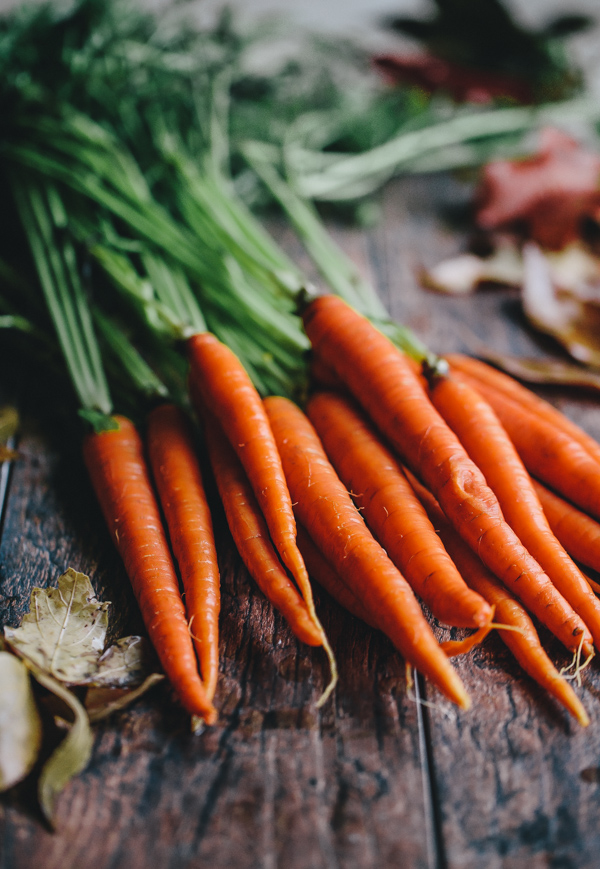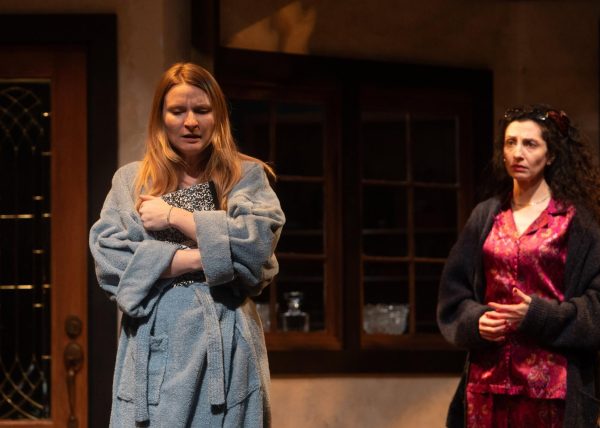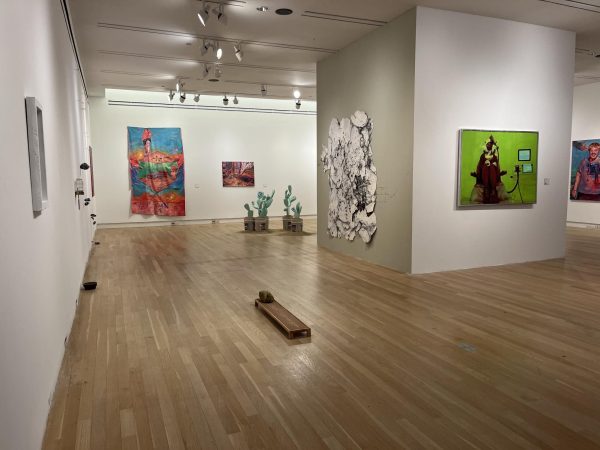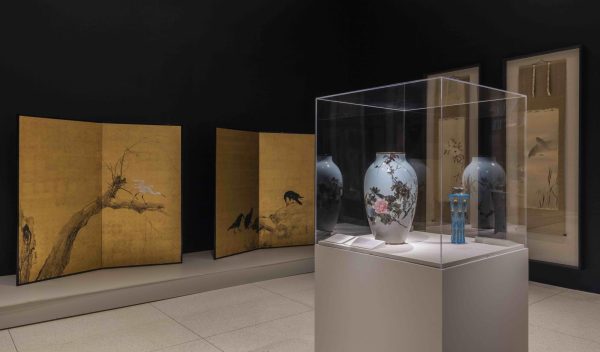Three UChicago Students’ Pop-Up Restaurant and What It Can Tell Us About Fine Dining
What does a UChicago student-run restaurant’s tasting menu tell us about dining culture?
Consider having this newly created, refreshing [“carrot air”] on a tasting menu at a student-run restaurant called Chef’s Table at The Crescent, or simply “The Crescent.”
October 30, 2022
I. Food
Consider a carrot. Consider juicing the carrot. Consider blending the carrot juice. Consider taking only the light foam sitting on the surface of the liquid. Consider the slightly orange foam on a bright tangerine granita garnished with pinches of thyme. Consider having this newly created, refreshing appetizer on a tasting menu at a student-run restaurant called Chef’s Table at The Crescent, or simply “The Crescent.”
“Carrot air,” as that light foam is called, is created using a technique called emulsification. With the help of an emulsifying agent such as gelatin, the chef vigorously whisks air into juice, creating a stabilized foam. Before you close this page out of boredom—that’s about the entirety of the culinary physics that I know of behind the dish. “Carrot air” belongs to the popular experimental culinary genre molecular gastronomy, or “the scientific discipline of cooking.” If you google “carrot air” as I did, the first search results are Alinea, Goosefoot, EVER, and other Michelin-starred restaurants in Chicago with $$$$ signs. At The Crescent, “carrot air” was the first course on a $45 tasting menu the week I attended—items on the menu change weekly.
The Crescent is run by three UChicago undergraduate students—third-year Neel McDonald, second-year Chris Elson, and first-year Arthur Frigo. The restaurant offers a five-course dinner every Wednesday to three tables of two. Since its opening on April 6, the restaurant garnered interest without much promotion. When I went during The Crescent’s third tasting, the waitlist numbered more than 50.
So what’s so special about having a contemporary American prix-fixe table d’hôte menu in the living room of a walk-up apartment in Northwest Hyde Park? I wondered this after having my appetizer and commenting “interesting taste” to my dining partner, who was pulled from the waitlist. He agreed and started to talk about the Japanese food he had during Chicago Restaurant Week 2022, which concluded in early April. The next course came: a baguette with whipped butter and fig jam.
Orange salt sprinkled on the whipped cream added tang to the sweetness of the jam. The thinly sliced, oval-shaped baguette slices were crisply toasted and acted as the perfect canvas. They also opened up my taste buds to a savory ratatouille, which was to come next. Originally a traditional Provençal dish, it harmoniously blends several summer vegetables—tomatoes, eggplants, zucchini. The chefs at The Crescent plated the ratatouille centrally and garnished it with roasted red pepper sauce. The first three dishes on the menu combined both refreshing taste and a level of intensity in the flavor mediated by a velvety texture. But we were, for sure, waiting for something. I raised my eyes to the bottle of wine on our table.
Obviously, that’s for the filet mignon. Complemented with arugula and goat cheese, the steak was perfectly tender. The chefs at The Crescent cooked the filet to create an almost buttery texture in the first bite and paired it with balsamic vinegar for additional flavors. The best part of the dish, however, was the meat itself. “We worked really hard to find good ingredients,” Elson told me. Even as the restaurant was running at a loss due to the cost of ingredients, chefs at The Crescent did not sacrifice ingredient quality. To make the passion fruit crème brûlée that followed the steak, McDonald traveled 45 minutes to buy passion fruit from a specific grocery.
II. People
McDonald, Elson, and Frigo met on the UChicago men’s varsity crew team. During one of the team’s meetings, Elson brought up his cooking Instagram, progamer_chef. Over a shared passion for food, the trio started to cook for one another, which gradually became a Thursday tradition. Their cooking turned from simple dinners to multi-course menus that involved advance meal prep. Then one day during their meal preparation, the trio thought: What if we invite people over and cook for them—not casually, but intentionally, bringing out flavors that people haven’t necessarily tried?
A big part of creating such a pop-up restaurant is to make food accessible to everyone, Frigo said. The average price of a five-course dinner at a modern contemporary American restaurant is usually around $150, a price inaccessible to the majority of college students. The Crescent does not seek to be a profit-maker. “That’s not our intention. It’s not going to turn into one either,” McDonald added. The atmosphere was also a significant aspect of The Crescent. For that, the chefs bought flowers, tables, and ceramic plates in addition to the ingredients—all out of pocket.
Not pursuing a 300 percent markup—unlike what most upscale restaurants do, according to FundingCircle—allows The Crescent to reduce the cost for students to one-third of the regular pricing. “Our job is to share our love of cooking with the UChicago community and share the experience of the culinary world,” Frigo said.
Elson, who is half Taiwanese, recently became interested in cooking Asian dishes as a way to connect to his heritage. McDonald, who developed a love for cooking during the pandemic, found a love for trying out new recipes. Frigo, who comes from a culinary family and met many executive chefs growing up, naturally got into the science of cooking. As he helped his single mother prepare food for his three younger brothers, Frigo progressed from cooking basic pasta dishes to experimenting with science-driven gastronomy techniques. The filet mignon on that week’s menu, for example, was cooked using “sous vide,” wherein the steak is put in a sealed plastic bag and cooked in water at a controlled temperature for three hours. “It’s an incredible, incredible experience,” he said.
“Is there a dress code?” I asked at the end of the interview.
No, they told me. That’s part of the accessibility.
III. Class
I rushed home to take a shower, hesitated for a second, and put on a shirt instead of a hoodie. I took a Lyft there, a mode of transportation that I only consider when I expect myself to be drinking. Shortly after I got out of the car, three others arrived. The drizzling rain forced the four of us to cluster at the front door waiting for someone to answer the buzz. Great! Time to observe: A girl with an Alpha Omicron Pi tote bag and her friend in a formal pleated mini dress whispering that she was overdressed. A guy I knew from his promotion of events hosted by a student-run venture capital group in a group chat. I walked up the stairs to the restaurant and into a sparsely decorated living room. Three tables were positioned apart from one another against the walls, creating ample space for one to hear their companion without interruptions. The empty space in the center was reserved, I assumed, for the chefs to serve dishes and explain how they design their menus.
I chose to not bring a friend as a plus-one to the dinner because—while the food was enticing enough to make me forget the journalistic ethics of visiting a restaurant as an amateur food critic—I was eager to know the target market of The Crescent.
I was introduced to my dining partner, Bryan, the director of a consulting club on campus. I tried to avoid getting into a conversation about recent market trends by staring at the pictures I took: a black napkin artfully folded into a rose, sitting on a wine glass; classic taper candles glowing on the fireplace shelves; an old-fashioned speaker playing jazz that filled the room. Then, the final guest of the evening arrived: David, in a suit and tie. I immediately realized that he was the reason The Crescent could break even that day. I recalled Arthur’s words: “We put a table for auction this week, and we had a bid come in for $200 for the entire table.”
David is an incoming associate at McKinsey Hong Kong. I didn’t quite catch how the conversations in the room turned from an appreciation for the food to MBA programs, but they did nonetheless. In response to someone’s question about whether he was still going back to Hong Kong, his hometown, before he headed back for his MBA, David replied, “Yes, because I was away from the Chinese market for a while.” The girls complained about their summer internships at some investment banks, and Bryan, who sat next to me, mentioned his $7,000 summer housing in Downtown Los Angeles that his firm was paying for.
When the steak was served, I heard Bryan toasting to David, saying that maybe they could figure out some VC opportunities in three years.
Those might be enough observations for the night.
IV. Culture
Can you really separate fine dining and class?
In dining terminology, “chef’s table” usually refers to a semi-private table in the kitchen reserved for guests of the chef. The guests get to observe the restaurant kitchen in a private setting away from the rest of the restaurant. The sophisticated and private ambience of the dining experience is usually the defining characteristic of upscale fine-dining restaurants, which originated in 18th-century France, where chefs began cooking private dinners for aristocratic families. The idea spread to the United States, where luxury hotels started to feature fine-dining restaurants in their business models, advertising both the quality of food and the well-rounded experience for restaurant-goers. Both historically and in the modern era, while the question of “who gets to dine” was never put on the table, every aspect of fine-dining restaurants differentiates their target customers from the rest of diners. I asked The Crescent’s chefs about this fine-dining culture.
The Crescent is not modeled after a fine-dining restaurant, the chefs told me. “People associate certain food with fine dining: You are always going to find caviar. You are always going to find truffles. You are always going to find some sort of inaccessible lobsters and sea urchins and things like that,” McDonald said. The chefs at The Crescent wanted to run a restaurant that highlighted traditional American dishes, which are generally not considered fine dining.
I thought about McDonald’s words as I broke into the torched, caramelized crème brûlée. Why would I never expect to see crème brûlée at a fast-food restaurant? Why did everyone laugh when I told them that I was covering The Crescent for UChicago’s student newspaper and the last food review The Maroon published was about the Taco Bell Cantina on 53rd? Why did I naturally come up with that joke? I pondered such things we take for granted as I ate. Food has never just been a necessity. For some, at least.
When we left The Crescent, it was still raining. Bryan asked me if I could call a Lyft for him. He had used up his 10 free passes.
Correction (November 1, 2022, 3:48 p.m.): A previous version of the story misspelled the last name of Elson. In addition, this story was updated to reflect that it was McDonald who drove to buy passion fruit from a grocery store, not Frigo.













